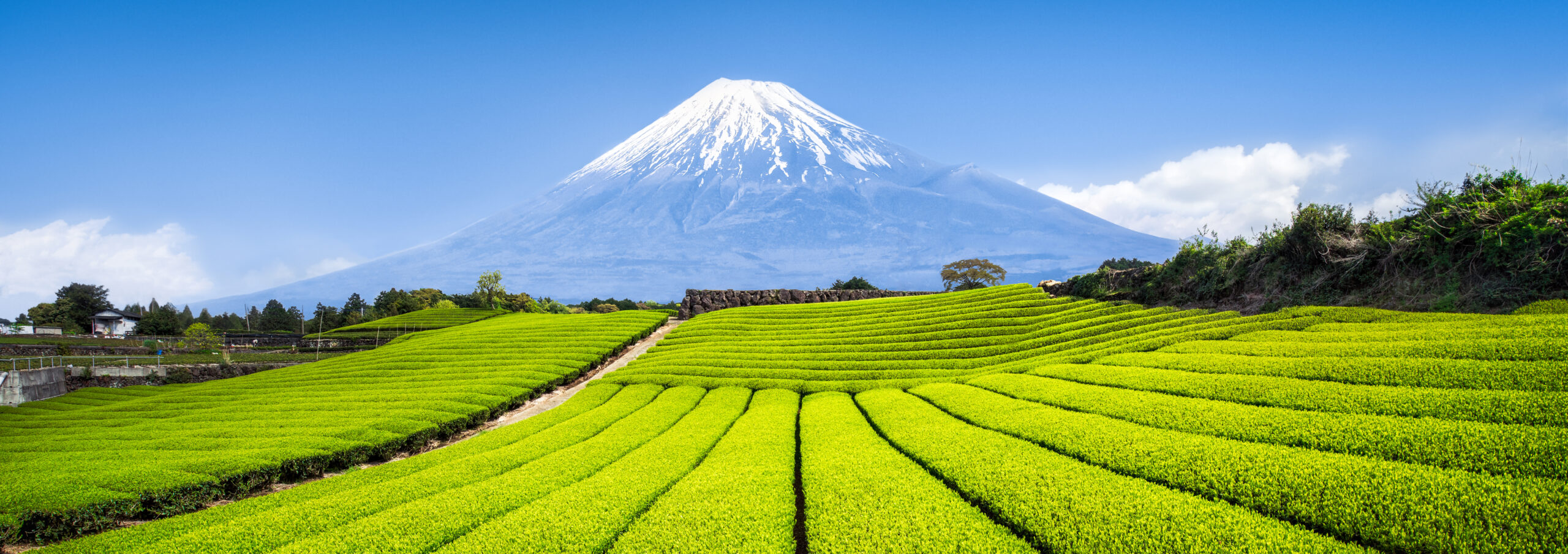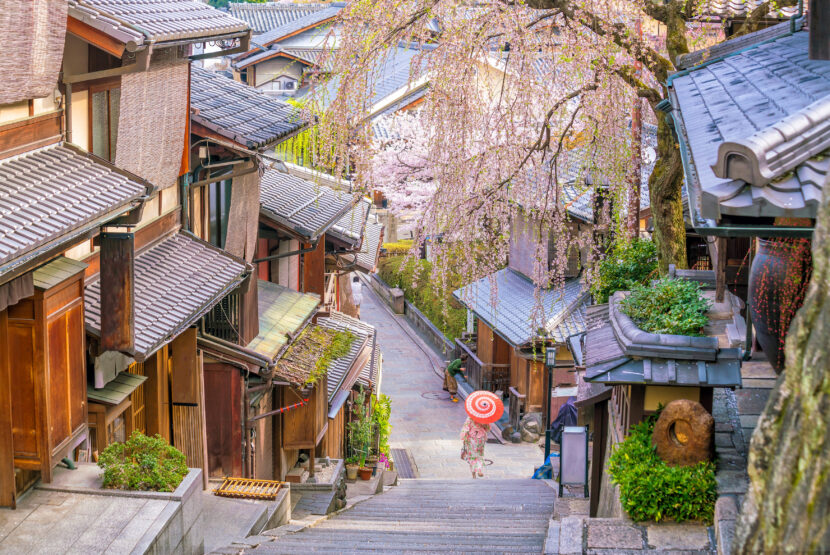TORONTO — Think you can’t sell Japan? Two top-performing travel advisors say they’ve found success positioning Japan as a destination for just about every type of traveller.
Simply put, if you have clients, you almost certainly have Japan clients.
And that’s good news given the country’s value proposition for Canadian travellers – not to mention Canadians’ willingness to trying new destinations these days.
As for Japan’s soaring popularity – and reports of tour guide shortages and other challenges – the Japan National Tourism Organization (JNTO) has tips about that and much more.
“YOU CAN’T GO WRONG WITH A SMALL GROUP ADVENTURE TOUR”
Stephen Brunetta, an Envoyage travel advisor and travel manager in North Vancouver, says he typically gets two Japan enquiries every quarter, and sells 7-8 Japan trips per year, making it a high conversion destination.
Whether it’s seniors coach bus tours during cherry blossom season, solo female travellers on a foodie mission, families with grade school-aged kids travelling to FIT over spring break, young couples on small group adventure tours, or guys’ ski trips, you name it, Brunetta has booked it to Japan. “The world seems to get smaller and more connected with each passing year,” he tells Travelweek.
His sales tips for travel advisors new to selling Japan include seeing the destination for themselves. His first trip to Japan was on G Adventures’ 9-day ‘Japan Express’ with a group of agents. “Experiencing the destination firsthand is always the best way to sell with confidence.”
Brunetta says he leaned heavily on tours in his early days, until he felt resourceful enough to build customized holidays. “You can’t go wrong with a 10-14 day small group adventure style tour with a few extra nights in Tokyo to explore on your own,” he says. “Share your clients’ enthusiasm, ask fellow agents for recommendations and throw in a unique excursion for your travellers.”
Brunetta adds that while social media has no doubt fuelled demand for Japan, it’s a destination that “really does sell itself with little effort. Sushi lovers may be drawn to the novelty of a sushi-train restaurant, then end up stumbling upon an izakaya for a more local dining experience. Sumo tournaments, onsens, amazing temple architecture, cutting edge technology, world-class skiing, and the famous Shinkansen (bullet train) are just a handful of reasons driving current demand.”

Mt. Fuji
“KNOW THE COUNTRY WELL AND STAY UP TO DATE”
Ivy Lam, who heads up a Nexion travel agency called Travel Gaga based in Oakville, ON, started selling Japan when she became a travel agent eight years ago.
She tells Travelweek her goal has been the same all these years: “I want people in North America to go see this beautiful country because it’s unique, it’s different and it’s an eye opening experience, in a good way.”
Lam says she makes 40-50 Japan bookings per year. Some 80% of her Japan-bound clients are families, plus another 10% in their 20s and 30s, and 10% are retired couples.
While she’s found there’s no set age group among her Japan clients, she does skew more high-end. She charges “a more than average fee” to help her travellers put together a custom FIT trip, based on her own years of knowledge, and without the use of tour operators.
Like Brunetta, Lam tells new-to-Japan agents that seeing the destination for themselves is a must. “Go there at least once because Japan is a very different country. It’s very hard to understand the culture and what you are selling if you have never been there.”
She also recommends the JNTO’s webinars for new local knowledge, and the Japan Travel Specialist program. “You need to know the country well and stay up to date. Even with a tour operator’s help to sell tours or packages, the client will need your help to prep their trip. They might ask, do I need an IC card for taking public transit? You need to know what’s out there and give them the correct answer.”
“A MUCH GREATER VALUE THAN EVEN FIVE YEARS AGO”
Priscilla Portsmouth, Senior Assistant Manager with the JNTO, says the number of Canadian visitors to Japan has been sharply increasing since the country reopened after the pandemic. “In 2024, we closed with a record 579,445 Canadian visitors, up 36% from the 425,874 Canadians in 2023. And 2025 is on track to exceed last year’s numbers yet again.”
As for Japan’s value for Canadian travellers, “these days 1CAD = 102JPY, a much greater value than what it was even 4-5 years ago. It’s around a 30% increase in value compared to the usual rate, every time you buy with yen,” she says. “This is especially great for those who like to do a lot of shopping in Japan. Shoppers can get even more savings with the tax-free system. In stores displaying the ‘Japan. Tax Free.’ sign, household goods and consumables totalling JPY 5,000-500,000 in a single purchase are tax free: https://www.mlit.go.jp/kankocho/tax-free/page01_000113.html.
She adds that hotels have always been well-priced in Japan, “and that’s even more true with the recent hikes in Canada. A business hotel or bed-and-breakfast generally runs from JPY5,000 to 10,000 (CAD$50-$100) per night. Higher level hotels and ryokan (Japanese traditional inns) will of course go for more than this, but there are also even cheaper options in the form of hostels and capsule hotels which can be as little as JPY2,000-4,000 ($20-$40) per night.”
Flying halfway around the world does come with a price tag. Says Portsmouth: “Flights are definitely one of the biggest costs when it comes to a Japan trip. Keep an eye out for airline promotions and travel off-season where possible. Winter is low season in Japan, but that doesn’t mean you need to trade in Canada’s blustery temperatures for more of the same. Japan’s climate varies wildly by region, and is temperate to downright subtropical the farther south you go. July and August are the peak of the hot and humid summer, but are an excellent time to visit cooler destinations on the Japan Sea side.”
She notes that since last September JAL has been offering complimentary domestic flights when passengers book an international flight to Japan from Canada (via the JAL site). “This is a great way to save if you’re planning to stray away from the traditional Golden Route (Tokyo-Kyoto-Osaka).
More and more Canadians, even first-time visitors, are expanding their reach beyond the Tokyo-Osaka corridor, going a little bit farther into areas like Kanazawa, Shirakawago, Hiroshima and Nagasaki, she adds. “The number of skiers heading into Hokkaido and the Japanese Alps is steadily increasing and pilgrimages are gaining popularity, with the Shikoku 88-Temple pilgrimage and the Kumano Kodo pilgrimage in the mountains of Wakayama, taking centre stage.”
She adds: “There are a multitude of ways to save on Japan trips since many things come at a variety of price points. For example, mixing a few expensive meals with less expensive (but still delicious) local options, or staying one or two nights at a traditional inn for the experience, and then the rest of the time in a lower-cost business hotel. Many attractions are also low-cost or even free. Admission to local temples, shrines, castles and parks in Japan is very economical and there are an infinite number of interesting neighborhoods and morning markets (https://www.japan.travel/en/story/exploring-japans-morning-markets/) that you can stroll through.”
- Skiing in Japan (photo courtesy JNTO)
- Hirosaki Cherry Blossom Festival (photo courtesy JNTO)
TOUR GUIDE SHORTAGE UPDATE
Travelweek asked Portsmouth about challenges travellers are facing finding private guides, due to such strong demand for Japan.
“The guide shortage is two-fold,” she says. “On top of the increased demand in recent years, Japan was closed for a long time during COVID, and many guides moved on to other jobs during that time. Sadly, many did not return to the profession when Japan re-opened.”
There is good news, however. “The requirements to become a licensed guide in Japan are very stringent, and in previous years all interpreter guides needed to be licensed. However due to high demand, the law was amended so that even those without the license are allowed to provide guiding services.”
TRAVEL ADVISOR RESOURCES
Travel advisors are an integral part of promoting and selling Japan. The JNTO hosts seminars and works hard to foster connections between retailers and a variety of sellers including local governments, hotels, tour operators and transportation companies.
“As a fairly complex destination, Japan can come across as rather intimidating, especially to first-time visitors, and this is where advisors really shine. Helping make sense of the multitude of options available to them – where to visit, where to stay, which trains to take – gives travellers that extra little boost of confidence to take the leap and book the trip,” says Portsmouth.
Brunetta says he feels the same way about Japan as he does about travelling on the European continent: “I could return every three years for the rest of my life and never get bored.”
He adds: “Years ago I remember hearing about how expensive Japan was, but I honestly find it more economical than Canada. Value aside, the number one reason any country wins someone over is its people. I have found Japanese locals to be so welcoming and respectful, the world would be a better place if every country embraced their tourists the way Japan treats international travellers.”
This article appears in the May 29, 2025 issue of Travelweek; click here. For trade info on the JNTO’s site click here.



